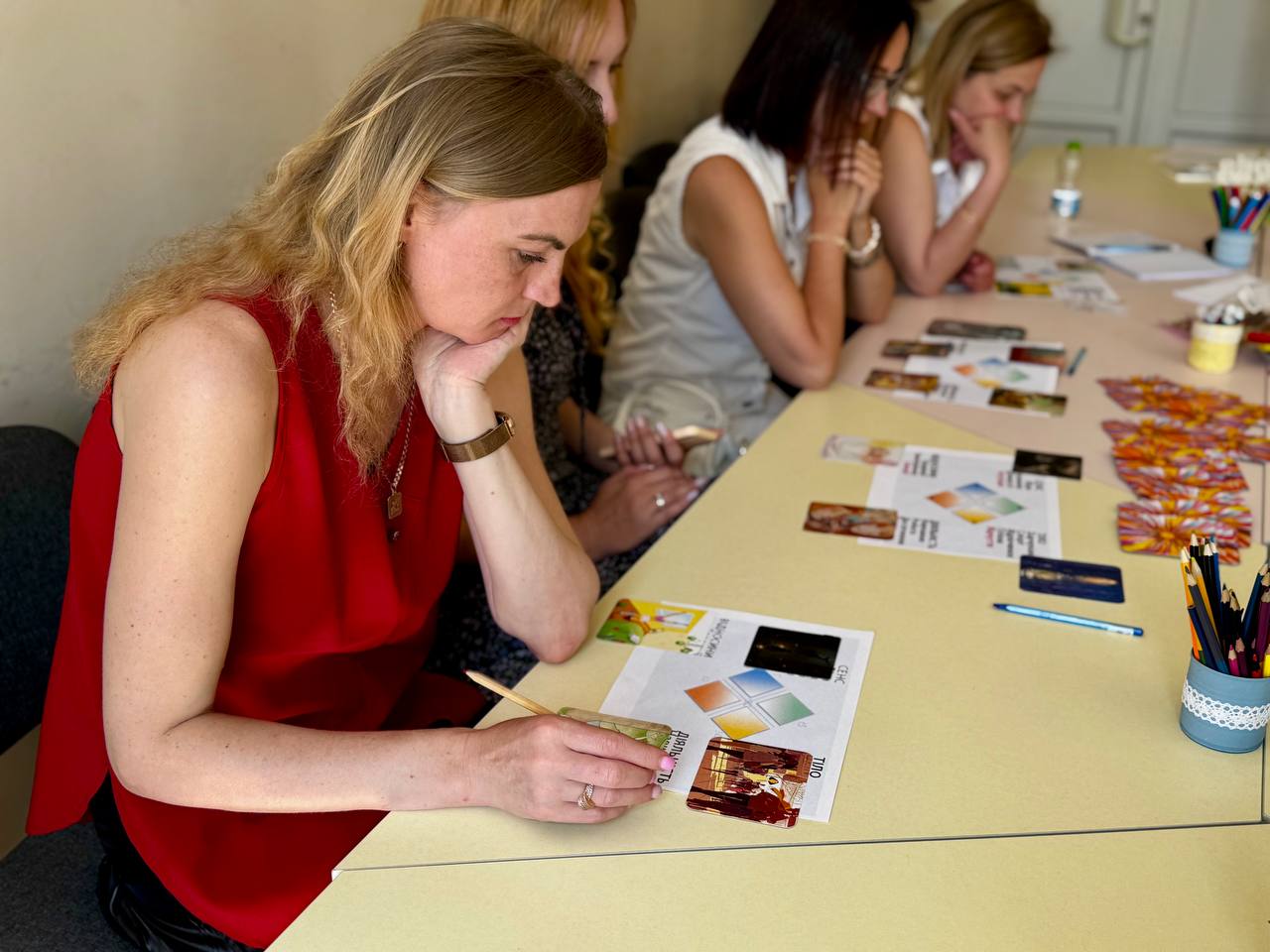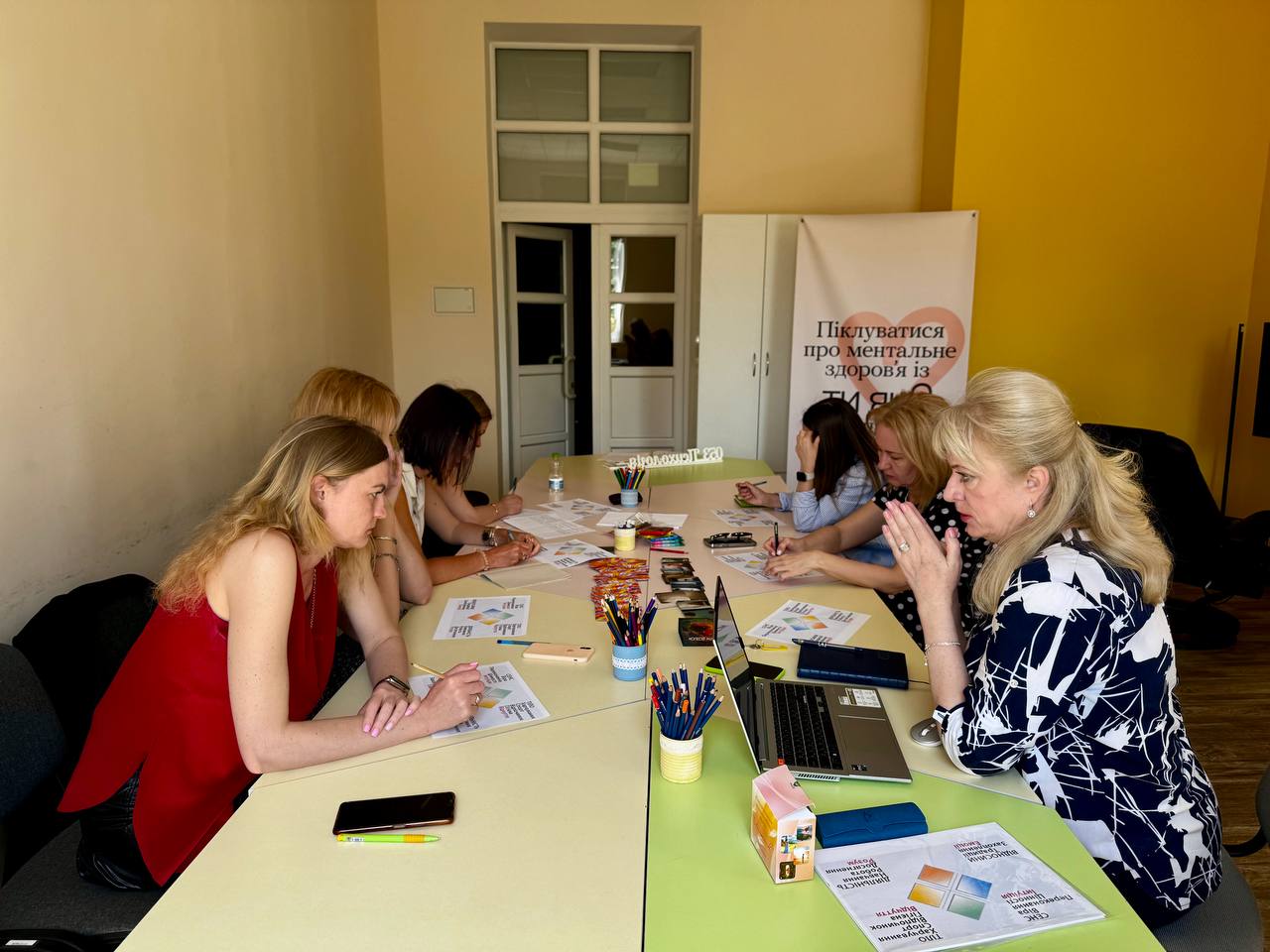On June 3, 2025, an art therapy session titled “Life Balance: How Not to Fall Apart Between Deadlines, Loved Ones, and Yourself” was conducted for students affected by war. The session was led by Olena Kryvenko, a practical psychologist and assistant at the Department of Psychology and Pedagogy of the National University “Yuri Kondratyuk Poltava Polytechnic”.
This art therapy session was built on the integration of visual-associative work with metaphorical associative cards (MACs) and the psychotherapeutic model of Nossrat Peseschkian. The combination of projective tools with a cognitive-behavioural approach allowed participants to explore their emotional states more deeply, assess how their life resources were distributed, and identify sources of internal support.
The primary objective of the session was to help participants become aware of how their life energy is distributed across four key areas: physical health, social connections, learning and achievement, and meaning in life and the future. The session became a therapeutic map of balance, helping participants find answers to the question: “Where are my resources, and where is energy being drained?”.
The art therapy effect was enhanced through the use of MAC decks “Source” and “Meanings”, which helped participants visualize their feelings and experiences. In the safe and supportive environment created during the session, each participant could work with a personal image of their internal state, reinforcing reflection with visual symbols. The images on the cards activated associative thinking, allowing participants to move beyond rational analysis and tap into deeper layers of emotion –this is the essence of the art therapy approach.
Participants selected cards that symbolised their current state in each life sphere and then discussed the results in small groups. This format fostered emotional openness, reduced anxiety, and strengthened the sense of belonging. The session also focused on recognising sources of personal resources, identifying areas that required more care, and creating an individualised plan of small, realistic steps for restoring balance.
A key component was the boundary-setting exercise, in which participants distinguished between what they could control in their lives and what needed to be released. This helped reduce internal tension and fostered a sense of resilience, even in challenging life circumstances.
The session concluded with collective reflection, during which participants created a personal emotional reminder – a symbolic “anchor of support” they could return to in moments of emotional overload.
The session received a strong emotional response and proved to be a valuable therapeutic tool in working with internally displaced persons (IDPs) experiencing adjustment difficulties, loss, and stress. Art therapy methods – particularly those that utilise imagery, metaphor, and bodily responses – offer a pathway to deeper self-understanding and the development of new inner resilience.
Such initiatives are especially vital during periods of wartime instability, when young people are searching for answers to questions like “Who am I now?” and “How do I move forward?” Art therapy offers not only tools for self-discovery but also helps preserve the individual's integrity during the most difficult times.










This session marked another meaningful step in the implementation of the Erasmus+ KA220-ADU TRUST project – Trauma of refugees in Europe: An approach through art therapy as a solidarity program for Ukraine war victims (Grant No. 2024-BE01-KA220-ADU-000257527). The project is co-funded by the EU and led by the Centre Neuro Psychiatrique St-Martin from Belgium, in partnership with the National University «Yuri Kondratyuk Poltava Polytechnic» (Ukraine), Greek Carers Network EPIONI (Greece), Fondazione Don Luigi Di Liegro (Italy), Lekama Foundation (Luxembourg), EuroPlural Project (Portugal).
Additionally, Poltava Polytechnic is currently conducting a series of art therapy sessions as part of the TRUST project. These sessions have included symbolic activities such as designing personal coats of arms to represent inner values, sources of strength and hope; associative drawing exercises; the “Relationships” activity aimed at reflecting on personal connections with loved ones, community, and country; discussions around “What does mental health mean to me?”; neurographic drawing; and immersion in body-oriented therapy where movement, dance, and physical expression become key tools for emotional release and recovery, worked with metaphorical associative cards, practiced associative reflection of thoughts on paper and explored the symbolism of the elements of nature and their direct impact on the human psyche and emotional state, plunged into music and daram therapy and took part in a unique art therapy session on neurography titled “My Tree of Life”.
Media Centre of
National University “Yuri Kondratyuk Poltava Polytechnic”



